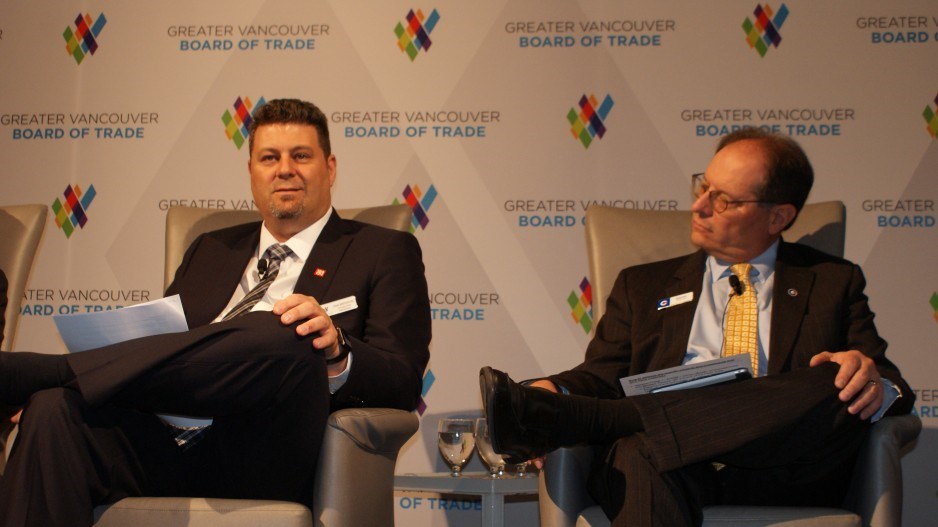Speed of goods to port, technological innovation and stakeholder collaboration will drive how British Columbia’s Pacific gateway ports stay competitive with U.S. ports, the Greater Vancouver Board of Trade heard May 10.
But, said a variety of speakers, bottlenecks in the movement of goods remain a problem. They’re an issue analysts have cited as a bar to greater competitiveness as goods sit at ports waiting to be moved to customers or shipped out.
The perennial issue of government red tape continues to be problematic, too, Chamber of Shipping president Robert Lewis-Manning said.
A decade ago, he said, shippers wouldn’t spend much time worrying about Canada.
Now, he said, “It is a much more complex environment.”
But, he added, with the shorter distance between Canada’s West Coast and Asia, B.C. ‘s ports – Vancouver and Prince Rupert – are successful.
However, he said, with success comes congestion
“We have lots of things we want to import and export,” he said. “All of these things are competing against each other for terminal space.”
But, before customers are competing for terminal space, it’s the truck and rail systems that are needed to get goods to port.
To that end, said CN Intermodal International assistant vice president Dan Bresolin, his company is investing billions in doubletracking rail corridors between Edmonton and Winnipeg as well as south to Chicago.
GCT Global Container Terminals president Doron Grosman said consolidation in ownership of shipping companies would also affect how ports operate.
“The power that customers have is rising,” he said.
The increased competition from other ports and demands of customers mean a need for an increase in the velocity of rail and trucking systems, Grosman said.
Grosman said the company has upgraded four terminals to be semi-automatic but said it has avoided fully automatic terminals.
“”It takes away from the unions, Grosman said, “We’re not here to take jobs away from the unions.”
He stressed, however, that terminal operators are going to have to make a choice between blockchain technologies. He said Maersk has moved ahead with its TradeLens freight-tracking technology in conjunction with IBM. Cosco is using its CargoSmart technology.
“Transportation operators and terminal operators need to choose,” Grosman said. “It can be complicated.”
Port of Vancouver CEO Robin Silvester said the port is using big data applications to analyze supply chain issues to find efficiencies.
B.C. Minister of Transportation and Infrastructure Claire Trevena said work such as improvements to the Trans Canada Highway would add efficiencies to the trade route system.
Part if that includes Kamloops to-Lower Mainland upgrades that come in addition to the use of an inland port in Kamloops to allow for more efficient rail freight handling through to coastal terminals.
Trevena said ensuring a balance between industrial and residential land remains a delicate process.
“We are victims of our geography,” she said, noting people need land to sustain jobs and for places to live.
“It isn’t one or the other,” she said.
Trevena was clear on one thing: the Agricultural Land Reserve will be preserved, the farmland maintained for its intended purpose.
“We are absolutely committed to the ALR,” Trevena said. “It is something that is fundamental.”



